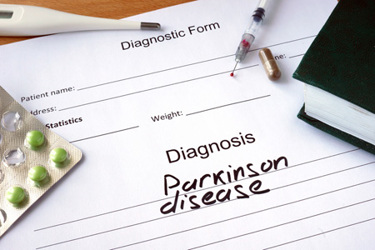Bayer, BlueRock's Parkinson's Trial On Course For Phase 2

By Erin Harris, Editor-In-Chief, Cell & Gene
Follow Me On Twitter @ErinHarris_1

In an article I shared earlier this summer, I mentioned that Bayer’s subsidiary, BlueRock Therapeutics, was one year into its Phase I trial for its cell therapy, bemdaneprocel, a stem cell treatment for Parkinson’s disease (Parkinson’s affects more than 10 million people worldwide.). BlueRock’s therapy was shown to be well-tolerated and that transplanted cells grew as intended in patients’ brains. At the time of the article, Bayer stated it had been the first company to report initial success treating Parkinson’s disease in humans using an experimental stem cell therapy.
Just recently, Bayer released an update stating that for BlueRock’s experimental therapy, the dopamine-producing nerve cells were implanted into the brain to restore neural networks destroyed by Parkinson’s. Drugs to prevent the immune system from attacking the new cells were also given, and the company has confirmed the trial hit its primary endpoint of demonstrating safety and tolerability in all 12 patients.
Indeed, researchers took pluripotent human embryonic stem cells and transformed them into dopamine-producing nerve cells. When surgically implanted into the brain of a person with Parkinson’s disease, the therapeutic cells are designed to restore neural networks destroyed by the disease. Initial trial results showed the cells multiplied and started making dopamine, an important brain signaling molecule, which is lacking in Parkinson's patients.
A phase 2 clinical trial is on course to open enrollment next year.
Early Discussions of BlueRock’s Phase 1 Study
Discussions about BlueRock’s clinical trial have been on our minds for some time. Indeed, late last year, I sat down with BlueRock Therapeutics’ CEO, Seth Ettenberg, for an episode of Cell & Gene: The Podcast. The episode focused on the clinical stage cell therapy company’s aforementioned Phase 1 clinical trial for Advanced Parkinson’s Disease. Ettenberg discussed the Phase 1 trial as well as plans for advance testing on humans to the second of three stages. For this trial, as noted earlier, researchers took pluripotent human embryonic stem cells and transformed them into dopamine-producing nerve cells.
During my discussion with Ettenberg on the podcast, we also discussed induced pluripotent stem cells (iPSCs) and their most promising therapeutic applications in development, the major regulatory challenges that the field faces for clinical use of iPSCs, and more.
Finally, if you’re interested in learning more about what’s going on at BlueRock, check out our Cell & Gene Live from earlier this summer, featuring Craig Beasley, Chief Technical Officer at BlueRock Therapeutics along with Narinder Singh, Chief Technical Officer at Arcellx. During the hour-long virtual presentation, now available on demand, Beasley, Singh, and I discussed why process automation, task automation, and test automation have become crucial components of cell therapy manufacturing as well as how to improve cost and scalability in cell therapy manufacturing via standardization and automation. In this particular segment, Beasley shares how he and his team focuses automation based on their different cell types, and here, why you should never automate a bad process.
